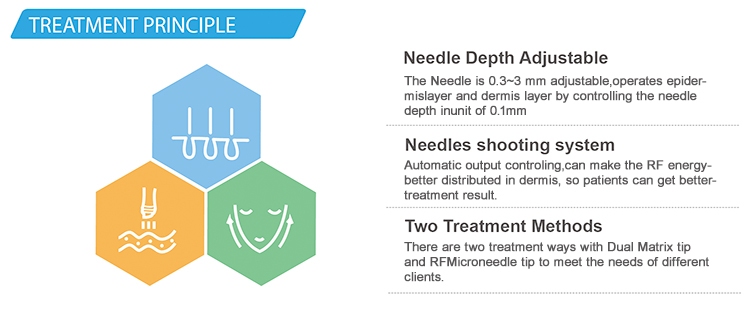Unveiling the Benefits of Microneedling Machines for Radiant Skin
Understanding Microneedling and Its Benefits
Introduction to Microneedling
Microneedling is a minimally invasive cosmetic procedure. It uses fine needles to create tiny punctures in the top layer of the skin. This process triggers the body’s natural healing response, stimulating the production of collagen and elastin, vital components for healthy, youthful-looking skin. Using a microneedling machine, multiple micro-injuries are delivered precisely to the skin, allowing for controlled and effective treatment aimed at rejuvenating the skin’s appearance.
Advantages of Microneedling for Skin Health
The benefits of using a microneedling machine are extensive and widely recognized in the skincare industry. First and foremost, microneedling is known for its ability to significantly improve the texture and tone of the skin, tackling issues such as fine lines, wrinkles, and uneven skin tone. Additionally, microneedling promotes collagen production, which helps to firm and plump the skin, reducing signs of aging. The procedure also enhances the absorption of skincare products, making serums and creams more effective. Furthermore, it can minimize the appearance of scars, including acne scars, by breaking down old tissue and stimulating the regeneration of healthier skin.
Common misunderstanding About Microneedling
Despite its growing popularity, several myths surround microneedling that need to be dispelled. One common misconception is that microneedling is extremely painful. In reality, the discomfort is usually minimal, especially when a numbing cream is applied before the procedure. Another myth is that microneedling is only for aging skin; however, people of all ages can benefit from microneedling for concerns like acne scars or hyperpigmentation. Additionally, some believe that microneedling requires extensive downtime, but most people experience only mild redness for a short period after treatment. It’s crucial to rely on factual information to make an informed decision about this beneficial procedure.
How Microneedling Machines Work
Basic Mechanism of Microneedling Devices
A microneedling machine operates by using fine, sterilized needles to create controlled micro-injuries on the skin’s surface. These tiny punctures stimulate the body’s natural wound healing processes, leading to increased production of collagen and elastin. This mechanism rejuvenates the skin, making it smoother and more radiant. Most microneedling devices offer adjustable needle lengths, allowing customization according to the specific needs of the skin and the area being treated. This precise control is particularly advantageous for targeting different skin conditions effectively.
Types of Needles Used in Microneedling Machines
Different types of needles are used in microneedling machines, each designed to provide specific benefits. Stainless steel needles are commonly used due to their durability and resistance to corrosion, making them ideal for consistent, repeated usage. Titanium needles, on the other hand, are stronger and can maintain their sharpness for a longer duration, offering a more efficient penetration of the skin. Additionally, some devices feature gold-plated needles which are hypoallergenic and suitable for sensitive skin. The choice of needle type can depend on individual skin sensitivity and treatment goals.
Safety Features
Safety is paramount in microneedling treatments, and modern microneedling machines come equipped with various safety features and adhere to strict regulations. For instance, many devices include built-in sterilization systems, ensuring that the needles are clean and safe for each use. Some machines also have pressure-sensitive controls to prevent the needles from penetrating too deeply, thereby reducing the risk of damage. Furthermore, regulatory bodies such as the FDA (Food and Drug Administration) evaluate and approve microneedling devices to ensure they meet safety and efficacy standards. It’s essential to choose a device and practitioner that comply with these safety regulations to minimize risks.
Choosing the Right Microneedling Machine
Factors to Consider When Buying a Microneedling Machine
When selecting a microneedling machine, several factors should be taken into account to ensure optimal results and safety.
Needle Length and Quality
The length and quality of the needles are critical considerations. Depending on your skin’s needs, different needle lengths may be required. Shorter needles (0.25mm to 0.5mm) are typically used for surface treatments such as improving product absorption, while longer needles (1.0mm to 2.5mm) are better suited for addressing deeper skin concerns like scarring and wrinkles. High-quality needles made from durable materials like stainless steel or titanium ensure effective penetration and reduce the risk of infection.
Speed and Depth Settings
Adjustable speed and depth settings enable customizing the treatment according to specific requirements. Machines with variable speed settings allow for faster and more efficient treatments, while adjustable depth settings offer the flexibility to tackle different skin areas and conditions. This level of customization enhances the safety and efficacy of the microneedling procedure.
Power Source: Manual vs Electric
Microneedling devices can be manual or electric, each with its advantages. Manual rollers are simple to use and typically more affordable, but they may lack precision. Electric microneedling pens, however, offer more accurate depth control and consistent needle penetration, often resulting in more uniform and desirable outcomes. The choice between manual and electric devices depends on user preference and desired results.
Frequently Asked Questions (FAQs) About Microneedling Machines
How Often Should You Use a Microneedling Machine?
The frequency of microneedling treatments can vary depending on the individual’s skin type, condition, and treatment goals. Generally, for professional treatments, a session every 4 to 6 weeks is recommended. For home use devices, treatments can be done more frequently, around once every 1 to 2 weeks. However, it’s crucial to follow the manufacturer’s guidelines and consult with a skincare professional to determine the ideal frequency for your specific needs.
Are There Any Side Effects to Be Aware Of?
While microneedling is generally safe, there are potential side effects to be mindful of. Common side effects include redness, swelling, and minor skin irritation, which typically subside within a few days. In rare cases, there may be more severe reactions like infection or scarring, particularly if an unclean device is used or the procedure is performed incorrectly. It’s important to use sterile equipment, follow aftercare instructions, and seek professional guidance to minimize risks.
Can You Combine Other Treatments with Microneedling?
Microneedling can be effectively combined with other treatments to enhance results. For instance, using hydrating serums or anti-aging products immediately after microneedling can significantly improve their absorption and efficacy. Consulting with a skincare specialist can provide insights into the best combination treatments for achieving desired outcomes.
In order to ensure the effectiveness of microneedle technology and reduce its possible side effects, we should choose a qualified and trustworthy brand.
Nubway is a reliable beauty equipment supplier that offers a range of high-quality microneedling machines. These machines are designed to provide effective and efficient microneedling treatments for various skin concerns.
With over 10 years of trade export experience, Nubway has gained a strong reputation in the industry and has exported its microneedling machines to more than 120 countries. The company has a large factory spanning over 30,000 square meters and employs over 50 R&D engineers to ensure continuous innovation and improvement of their products. Additionally, Nubway has a dedicated team of after-sales engineers to provide excellent customer support and service.






